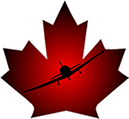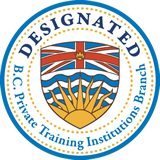 |
|
CROSS WIND HANDLING: TAXIING
“It’s
like riding a bicycle, or water skiing…or opening a Bit O Honey
without
At some point in our careers as pilots, unless we are very, very careful and very, very lucky, we must confront and come to some working terms with handling our aircraft in gusty and crosswind conditions. Early is probably better than late, but, in any case, once you come to terms with the beast, you will feel a great sense of relief and accomplishment. I know I did. For me, a dogged but slow learner, the time arrived long after I had completed my private pilot training and was well into my commercial program. Like most people who have learned to fly post-1950’s, I learned on a tricycle gear aircraft from instructors whose flying experience was also limited to tricycle gear aircraft. Now, don’t get all excited. There is nothing wrong with learning to fly on a tricycle gear aircraft. It is the modern way and the vast majority of aircraft now in service both privately and commercially are configured as tricycle gear. It’s just that, as any conventional gear airplane pilot will tell you, you simply cannot learn to taxi, take off, or land a tailwheel aircraft without learning how to coordinate your hands and feet. The geometry of tailwheel aircraft, which have the centre of gravity located behind the main landing gear, requires that the aircraft taxi, take off and land with its longitudinal axis coordinated with its direction of travel or that pesky centre of gravity will assert its dream of moving to the head of the parade, taking the back two-thirds of the aircraft with it. Once the aircraft is untied, it must be flown. Flying a tricycle gear aircraft whose geometry locates the centre of gravity ahead of the main landing gear allows a pilot to, as we might say, get away with some pretty sloppy hand and foot coordination without tragic results, at least in reasonably forgiving wind conditions. Unlike a conventional gear aircraft, the tricycle gear aircraft has a natural tendency to straighten itself out and travel nose first under most conditions. Unless it is very poorly handled, the aircraft will do most of the work involved in keeping itself straight and tracking true on taxi, take-off, and landing. Dealing with windy and crosswind conditions begins the moment we untie our aircraft. The creature is designed to fly and moving air, wind, is its medium of operation. An important part of our pre-flight preparations will have been to check the winds, both current and forecast. A check on the crosswind component at both our departure and destination aerodromes is a wise move. A good rule of thumb: if your aircraft’s POH does not stipulate a crosswind tolerance limit, use 20% of stall speed. All North American-built, certified aeroplanes are capable, in competent hands, of taking off and landing under the 20% conditions. If your aircraft normally stalls at 60 Kts, a 90-degree crosswind component of 12 Kts is a reasonable limit, depending, of course, on your personal level of skill and experience. To determine the crosswind component of the current breeze, obtain the wind speed and direction. Convert wind direction to magnetic. Calculate the difference between wind direction and runway heading. Consult a handy crosswind component chart. If your E6B flight computer doesn’t have a crosswind component graph printed on it, you will find one in the planning section at the back of your CFS. A no-go decision may be called for before we even take that walk out to the tie-down area. Once our aircraft is untied and free, we can consider it a live thing. It will respond to the ambient wind conditions. Aircraft are designed to weathercock, or turn into the relative wind: the wind our aircraft experiences as a produce of ambient wind and the wind produced by movement of the machine through space. That is the main function of the dorsal fin and vertical stabilizer. Your aircraft will respond to this weathercocking tendency both in the air and on the ground. Tricycle gear aircraft are much more forgiving on the ground than conventional gear aircraft. Their nose wheel, firmly on the ground, deals with much of the turning forces applied by wind. Tailwheel aircraft, on the other hand, are less stable and much more prone to the turning forces of the wind; they must be “flown” actively throughout taxi. On the ground, we use a combination of rudder and rubber to maintain directional control. And, don’t forget the brakes. They can be very useful both in maintaining directional control and speed. A basic rule of thumb for tailwheel pilots, particularly ones flying lightly wing loaded aircraft like a J-3 or a Champ is, as Dagley Reeves wrote, “If you’re having trouble taxiing due to the wind, now is the time to consider if trying to fly is a good idea.” I would suggest the same rule of thumb applies to any aircraft. If you are having control problems during taxi as a result of wind force, unless there is some very important and compelling overriding principle involved, it might be an excellent plan to head back to the tie-down area and rethink your plan for the day. Aside from the turning forces applied by the wind, there can also be considerable lifting force. If the wind can get under a wing or tail surface and produce lift, things can become very interesting very quickly. In addition to responding to turning forces produced by the wind while taxiing, given any opportunity, an aircraft will leave the ground and take to the air, probably in some quite undignified manner. High wing aircraft are much more responsive to lifting wind forces than their low wing cousins. They provide the wind much greater opportunities to get in under wings and other control surfaces and provide lift that, on the ground, isn’t always so very helpful. Two major keys to dealing with both weathercocking tendencies and lift problems are taxi speed and aileron/elevator control. As we all remember, lift increases with the square of our speed. Taxiing at dead slow in crosswind and gusty conditions can make all the difference in maintaining control of the aircraft. Aileron and elevator control become very important during taxi in windy conditions. We all remember the basic rule: turn into the wind when the wind is from the front quarters of the aircraft; dive away from the wind when the wind is from the rear quarters. If the wind is blowing from directly abeam the aircraft, full aileron is applied toward the direction from which the wind is blowing to help maintain directional control. This raises the up-wind aileron and reduces the lift of the wing most likely to be lifted. When manoeuvring on the ground, particularly when turning either toward or away from the prevailing wind, it is very easy to have a wing lift and lose control of the aircraft. When turning right, for example, away from the wind, left aileron is used. This aileron application reduces lift on the up-wind wing and can assist in keeping things under control. When turning right toward the wind, right aileron would be applied. At all times when taxiing in gusty wind conditions, avoid excessive speed, sudden changes in throttle setting or sudden braking. Firm yet gentle and coordinated use of controls is called for. Remember the direction from which the wind is blowing at all times and be aware of your aircraft’s directional relationship to the wind. Conventional gear aircraft have the additional concern of keeping the tail wheel firmly on the ground. The prop wash, as well as ambient winds, affects lift at the horizontal stabilizer. When taxiing toward the wind, it is normal practice to include some up elevator to help hold that tail wheel down. When taxiing with the wind at the rear of the aircraft, the same inputs we would use with a tricycle gear aircraft apply to tailwheel aircraft: dive away. Be very gentle with application of power. With the elevator in the down position, sudden application of power can lift the tail off the ground. These procedures aren’t simply one more item to quiz you on during your flight test and then be discarded. They may well save you some serious embarrassment or worse some gusty day while taxiing out to the runway. If the wind is blowing across the runway at a non-standard angle, it will also be blowing across at least some of the taxiways you will have to use to get to the runway. Each new challenge a pilot chooses to take on increases his or her experience and range. Unless we are willing to limit our flying to days with no possibilities of crosswind or gusty conditions, we will need to come to terms with the required level of knowledge, skill and judgement to bring these conditions within our level of competency. Start gently. Build your skills as your experience and knowledge develop. Face new experiences at your own rate. Seek help, if in doubt. Enjoy the process, but keep your personal limits and the limits of the aircraft you are in command of clearly in mind. |



